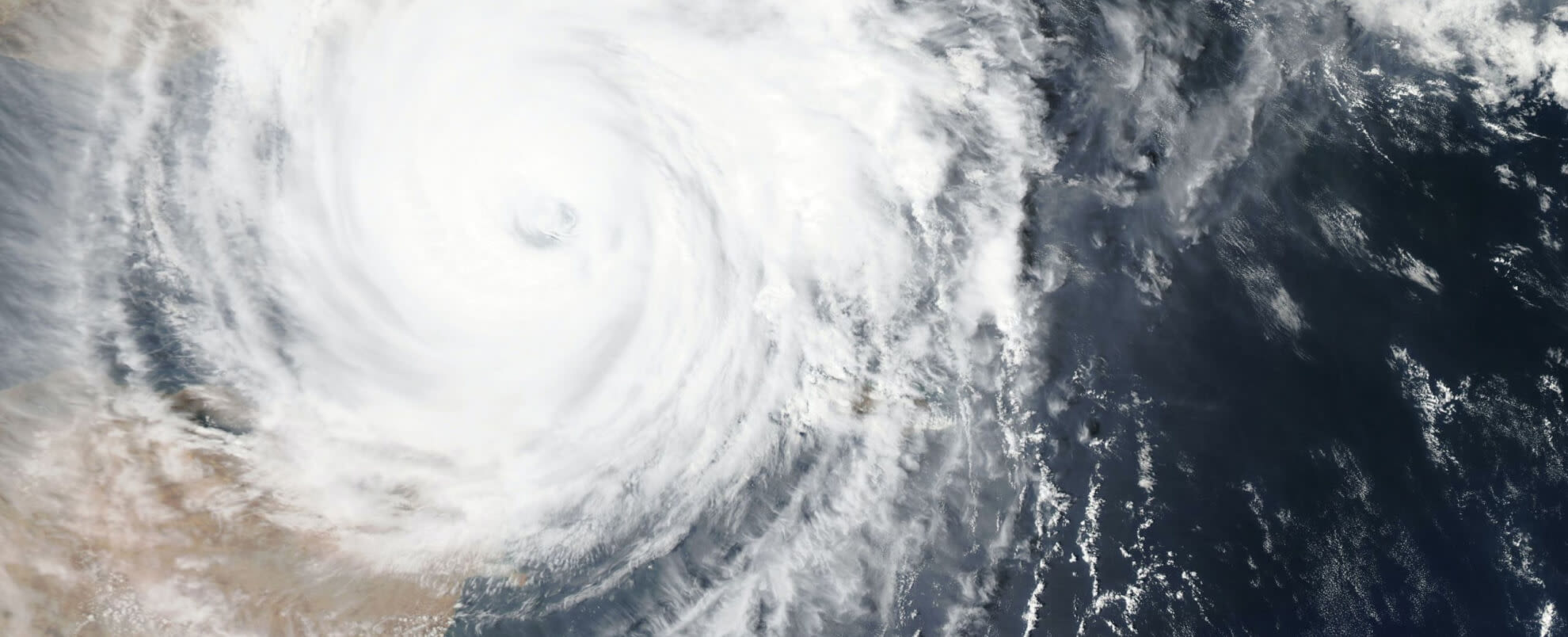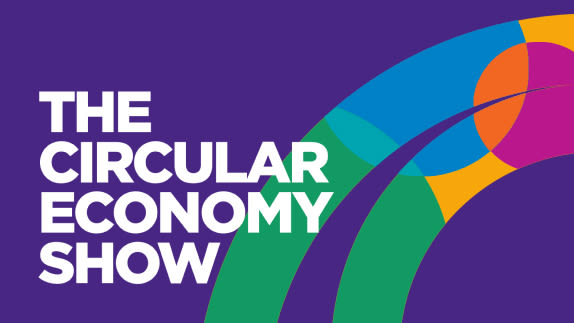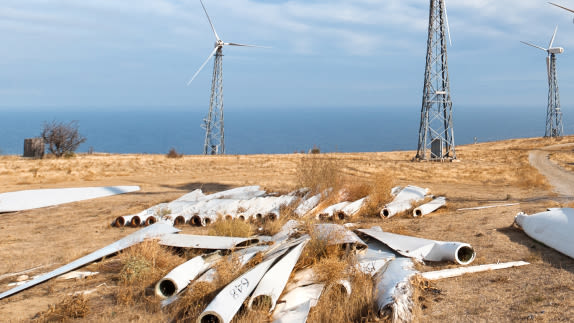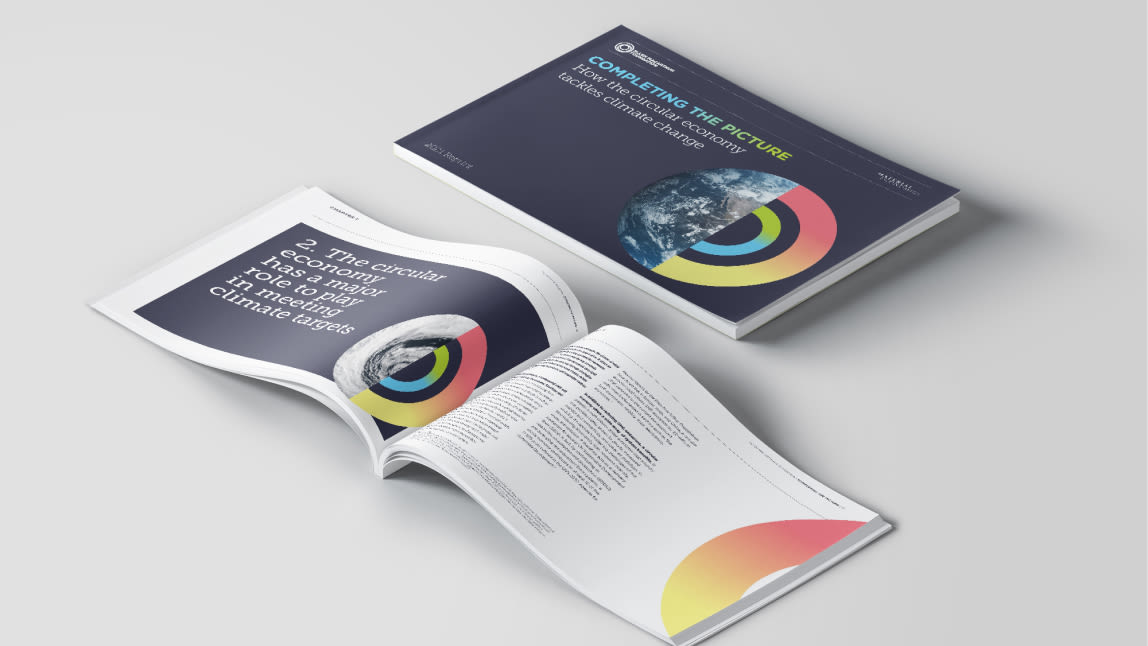Humanity is reaching and exceeding the limits of the earth. This conclusion, drawn in 2009 by a team of scientists from the Stockholm Resilience Centre (SRC) confirmed what many had understood for decades.
Listen to this article:
Led by Johan Rockström, the SRC proposed a set of nine planetary boundaries which define the biophysical limits of a stable and resilient planet. These limits are being pushed up against and exceeded as a result of the extractive and polluting nature of our current linear economy which has propelled us into a human-dominated epoch: the Anthropocene. While humanity might be dominant, our separation from nature is increasingly acknowledged as being to our own detriment.
Our take-make-waste economy has led to widespread resource depletion. The pace at which we are degrading soil threatens global food supplies. Many of the minerals and metals commonly used in manufacturing everything from smartphones to sunscreen are wasted and disposed of in ways that have serious environmental consequences. Freshwater, essential to our existence and also the production and supply of goods and services, while renewable, is a finite resource under pressure. We now know not only that the earth has its lines that must not be crossed, but that, since 2015, at least five already have been: climate change, biosphere integrity (biodiversity loss), land-system change, biogeochemical flows, and – most recently – novel entities, more commonly understood as pollution. In the process of making, using, and disposing of items and services needed to house, feed, fuel, and clothe the world we are pushing ourselves outside a zone of planetary safety and into a place of increasing risk and volatility.
Getting back within those boundaries is still possible. Humanity has already proven that it is capable of coming together to take collective action. Think, for example, of the ozone-protecting 1987 Montreal Protocol, ratified by international governments and reflected in business decision making. But the challenges are complex, and so are the systems that created them. We need change that is systemic, not piecemeal.

Mapping the planetary impacts of the linear economy
The symptoms of these planetary boundary breaches, as well as the warning signs of those at risk but not yet crossed, are widespread. The most headline-grabbing are already well-known. That there is forecast to be more plastic than fish in our ocean by 2050 has become a powerful environmental signifier. That 3.40 billion tonnes of global waste expected in the same timespan is easily imagined in rubbish dumps the size of a hundred football fields. That 10,000 acres of Amazon rainforest lost to agribusiness-driven deforestation each day is synonymous with the biodiversity and climate crises. Each image – and impact – can be traced back to the design choices, manufacturing methods, supply chains, and disposal decisions entrenched in a linear economylinear economyAn economy in which finite resources are extracted to make products that are used - generally not to their full potential - and then thrown away ('take-make-waste')..
But not all the impacts of our extractive system are quite so conspicuous. Soil degradation caused by conventional agriculture is harder to visualise but devastating in its impact on biodiversity loss and risks to global food production. The loss of flora, fauna, and fungi may be barely noticeable day-to-day but its impacts on ecosystem function are already evident. The extraction of materials – and the pressure that places on planetary boundaries – is, in most cases, inversely proportional to the number of times a product or service is used.
As such, waste exists as much in unworn clothes and underutilised buildings, cars, and products as it does in trash.
Pollution is not always perceptible. ‘Invisible’ contaminants in our groundwater and microplastics in our blood streams are just some of the less obvious ways our current linear economy affects nature and human health alike.
Current planetary status: it’s complicated
Though each planetary boundary is distinct, all are interrelated. Perhaps the most well known codependency is that of climate change and biodiversity loss. Just as climate change accounts for 11 to 16% of biodiversity loss, biodiversity loss is itself a powerful accelerator of climate change by undermining nature’s ability to regulate GHG emissions in the atmosphere.
Other examples are more complicated. The overuse of nitrogen and phosphorus based fertilisers (planetary boundary: biogeochemical flows), when leaked into freshwater and marine environments via agricultural runoff, cause an increase in toxic algae blooms and ocean ‘dead zones’ (planetary boundary: biosphere integrity). Since the overuse of fertilisers degrades soil health, this runoff is accompanied by soil erosion which, in turn, compromises the soil’s stability, generating greater levels of runoff in future. This is accelerated by extreme weather like heavy rainfall and flooding. Such events are made more frequent and severe by climate change which is driven in part by the GHGs emitted during the production of the fertilisers in the first place. As the soil degrades, more fertiliser needs to be applied to maintainmaintainKeep a product in its existing state of quality, functionally and/or cosmetically, to guard against failure or decline. It is a practice that retains the highest value of a product by extending its use period. yields. In this reinforcing cycle of negative impacts, pushing up against the biogeochemical flow planetary boundary is both a contributor to – and a result of – climate change and biodiversity loss.
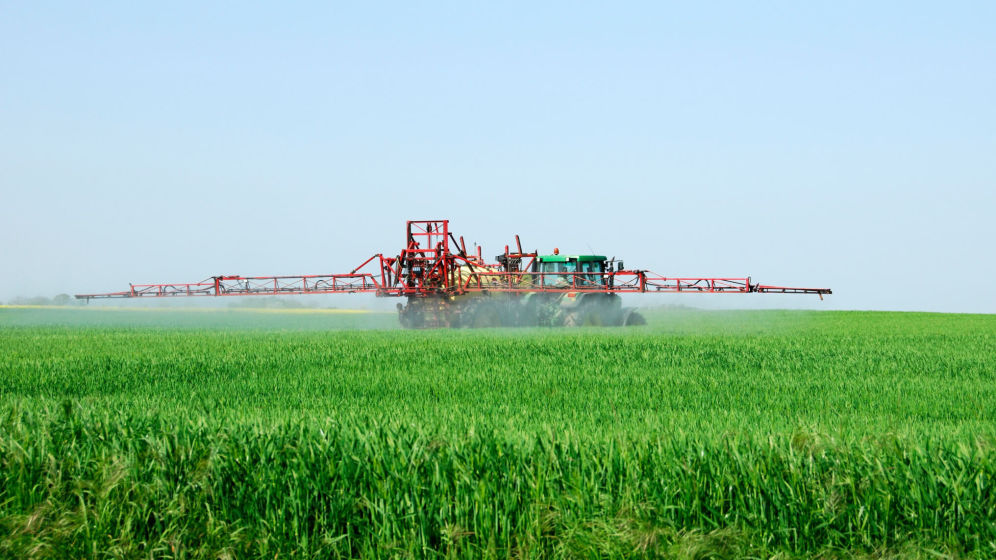
Most of the time these impacts compound upon one another, with one bad thing leading to another (and another). But not all interactions are vicious cycles. A single economic activity may have a negative impact on one or more planetary boundaries and a confoundingly positive impact on another. Take the fine floating particulate matter from anthropogenic sources such as car exhausts and clothes dryers. These impact on cloud formation (planetary boundary: atmospheric aerosol loading), increase the acidity of lakes and streams (planetary boundary: freshwater), and harm human, plant, and animal health (planetary boundary: novel entities, biosphere integrity) at the same time. But they can also have a cooling effect on the planet by forming a protective layer of cloud which redirects sunlight away from the earth and back out into space. Scientists are still working to establish the exact point at which the volume of particulates in the atmosphere cease to have a masking effect and instead tip the planetary scales, through the combined weight of their secondary impacts, towards a point of overall destabilisation.
Unpicking these interlocking impacts requires consideration of the whole; making progress on a single planetary boundary can risk unintended consequences. Until recently, the planetary boundary of stratospheric ozone depletion was, thanks to the historic 1987 Montreal Protocol, on a more positive pathway. However, new research suggests its recovery is at risk following chemical reactions from recent wildfires which are increasing in severity and frequency as climate change progresses. There are myriad examples like this. Each individual planetary boundary breach becomes a risk multiplier: overshooting in one area risks increasing the fragility of not only its closest link, but the entire earth system.
Happily, and more hopefully, the reverse is also true. By taking a whole system approach to better understand the complex interplay between economic activity and environmental impact, we can orientate our innovation efforts around this same relational pattern. In leveraging the power of positive action at scale, we can redesign our economic system so that it is regenerative by design rather than degenerative by consequence.
The role of the circular economy in getting us back within planetary boundaries (and keeping us there)
For policymakers, business leaders, and researchers, the planetary boundary framework acts as a situational analysis for the state of the planet upon which business, society, and the natural world depend. It sets the scale of the challenge without professing to propose specific solutions. We need an economic framework which addresses the root causes of each planetary pressure point and plots a positive way forward.
A circular economycircular economyA systems solution framework that tackles global challenges like climate change, biodiversity loss, waste, and pollution. It is based on three principles, driven by design: eliminate waste and pollution, circulate products and materials (at their highest value), and regenerate nature. eliminates waste and pollution, circulates products and materials at their highest value, and regenerates nature by design. Accelerating its transition can not only help to bring us back within the biophysical limits of our planet and keep us there, but build economic value, deliver material cost savings, and create jobs at the same time.

Eliminate waste and pollution
If waste is the most visual representation of the linear economy – evident everywhere from construction to clothing and electronics to interiors – its elimination is one of the central tenets of the circular economy. Waste itself is an inherently anthropogenic concept, supercharged by the birth of planned obsolescence in order to stimulate demand and ensure continual production. Solving the waste crisis, which both directly and indirectly contributes to cascading planetary boundary breaches, cannot be achieved through surface-level strategies of reduction or recycling alone. Rather, we must reframe our entire approach so that in a circular economy, as in nature, waste simply does not exist.
When we take a material definition of waste, plastic is often our first thought; 75% of all plastic ever produced becomes waste. From packaging to parts, these ubiquitous compounds are used by almost every sector on earth. The planetary boundaries case for action on plastics is unequivocal – we must stop it from polluting our atmosphere, poisoning our land systems, and entering our oceans. That means stemming the tide at source. While it is essential that any plastics we do produce are reused, recycled, or composted, it is even more important that businesses prioritise models of design and delivery which eradicate the use of virgin fossil fuel-based plastic from the outset.
Transitioning to a circular economy which eliminates all problematic and unnecessary plastic involves harnessing the same enthusiasm for design as brought it to the fore in the first place, without losing any of its functions. Designing alternatives – such as solid shampoo bars, toothpaste tablets, and compostable food casings – can drastically reduce the pressure on multiple planetary boundaries at once. Every time a business removes the need for virgin plastic within or around a product or service, it helps prevent the leakage of environmental pollutants – including those that are ozone-depleting – protect biodiversity, reduce climate change-causing GHG emissions, relax anthropogenic pressure on ocean acidification, keep microplastics out of freshwater systems, and stop the release of further airborne pollutants into the atmosphere. That’s a lot of boundaries.


Compellingly, a circular economy for plastic offers businesses strong economic and social benefits too: not only by reducing packaging and transportation costs, but also by encouraging investment to flow into new areas of upstream innovation. By 2040, a circular economy for plastic has the potential to generate savings of USD 200 billion per year, and create 700,000 net additional jobs. Similar waste elimination strategies can be implemented and scaled to the benefit of multiple planetary boundaries across all sectors and industries, from construction to computing.

Circulate products and materials
The second principle of a circular economy involves keeping materials and products in use at their highest value. The more times a product or service is used, the fewer of them are needed. By making much better use of the embodied energy and labour, and the intrinsic value of the materials in a product or service – applicable to everything from headphones to high-chairs, washing machines to watches, and lighting to laptops – a circular economy prevents the need for further material extraction. In doing so, it not only reduces pressure on from individual planetary boundaries – land system change, biosphere integrity, freshwater, novel entities, climate change, and more – but makes space for the earth’s natural systems to recover and regenerate across the planetary system.
The global food industry is responsible for a third of global greenhouse gas emissions and the primary driver of biodiversity loss worldwide. A circular economy for food can help to rebalance planetary boundaries at a constituent level and, in the longer term, a holistic one.
Landfill-bound surplus edible food is a leading contributor to climate change. In a circular economy, this is tackled by diverting and redistributing unused food to those in need, from city-wide food sharingsharingThe use of a product by multiple users. It is a practice that retains the highest value of a product by extending its use period. apps to hyper-local community collections. When no longer suitable for human consumption, inedible food is kept in a prolonged cycle of use; as biomaterials for use in construction, starch-and-sugars based plastic substitutes, or even into clothing and shoes. To date, efforts to valorise millions of tonnes of organic waste have given us dresses made from the peel of Italian oranges, shoes from post-consumer coffee grounds, and vegan leather hand bags from leftover grape skins.


On the ground, farmers benefit too. Harvesting the entire plant creates new revenue streams which derive profit from byproducts across the whole crop. The global production of tomatoes, for example, generates significant amounts of organic agricultural waste, releasing excess CO2 into the atmosphere and contributing to climate change. A circular economy for food mimics natural systems of regeneration so that waste from one system is used as feedstock for another cycle. In the case of tomatoes, post-harvest plant stems and dried leaves can be given a second life as materials for cardboard-like packaging, waste filaments as bio-composites, and post-processing residues as bio-resins on the inside of tinned food. As long as these byproducts are processed without harmful chemicals and synthetic additives, what remains can eventually be returned to the biological cyclebiological cycleThe processes - such as composting and anaerobic digestion - that together help to regenerate natural capital. The only materials suitable for these processes are those that can be safely returned to the biosphere., putting nutrients back into the soil as organic fertiliser for the next generation of crops.

Regenerate nature
Together, the elimination of waste and the circulation of products and materials go a long way towards improving the status of each planetary boundary. But transitioning our planet from a place of volatility to a state of stability will also require more affirmative action. The third vital component of a circular economy is the regeneration of nature. Involving a total transformation of the way in which we design, manufacture, use, and conclude products, a circular economy builds rather than degrades nature with resulting benefits across each of the nine planetary boundaries. Regenerative productionRegenerative productionRegenerative production provides food and materials in ways that support positive outcomes for nature, which include but are not limited to: healthy and stable soils, improved local biodiversity, improved air and water quality. is often thought of in terms of agricultural food systems. But there are other parts of the economy that rely on farmed natural resources too – like fashion.
The global fashion industry is responsible for the production of over 2.1 billion tonnes of GHG emissions annually and release of 20% of industrial water pollution globally. Prioritising services such as resale, rental, repairrepairOperation by which a faulty or broken product or component is returned back to a usable state to fulfil its intended use., and remaking, can drastically reduce the emissions and pollution related impacts of clothing production in a ‘fast fashion’ model. ReuseReuseThe repeated use of a product or component for its intended purpose without significant modification. models help ease pressure on the boundaries of climate change and novel entities. But restoring planetary balance will require doing more good, rather than just less harm.
In a circular economy for fashion, materials matter. Here, the regeneration of nature starts by designing garments sourced from renewable plant-based fibres.
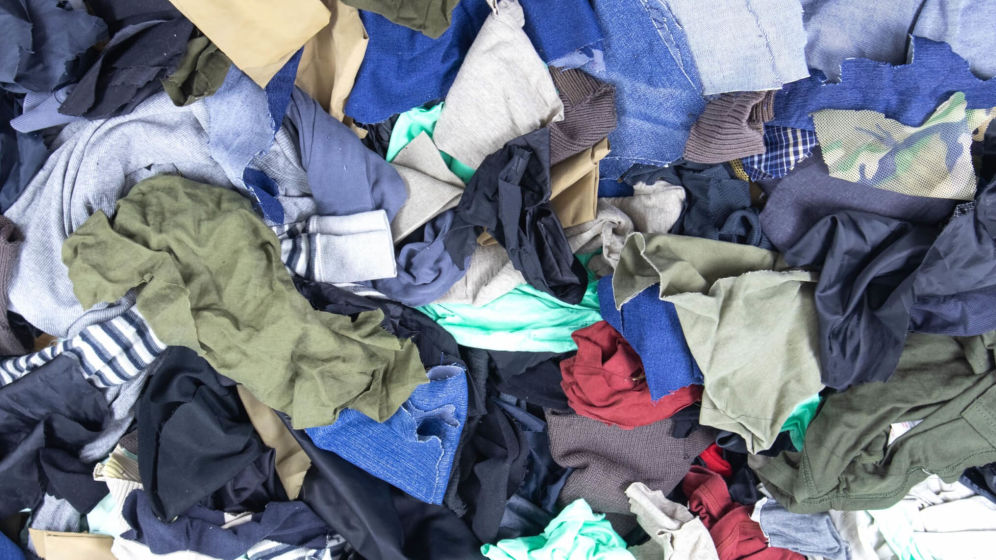
Towards a circular future within planetary boundaries
The planetary boundaries framework sets out the science of earth’s compounded crises. Each is caused, at its root, by our current linear economy. The circular economy, as a response, poses a triptych of principles by which we can individually – and therefore collectively – respond to the plurality of these planetary pressures. In decoupling economic activity from the consumption of finite resources, we dramatically reduce our demands on land, water, and energy, cutting GHG emissions and eliminating the leakage of harmful toxins and pollutants into the earth’s systems at every stage. In so doing, we can maintain – and, more importantly, mend – the connective tissue between a healthy and resilient environment and a healthy and resilient economy.
With special thanks to Ian Banks for his support and contribution in developing this article
